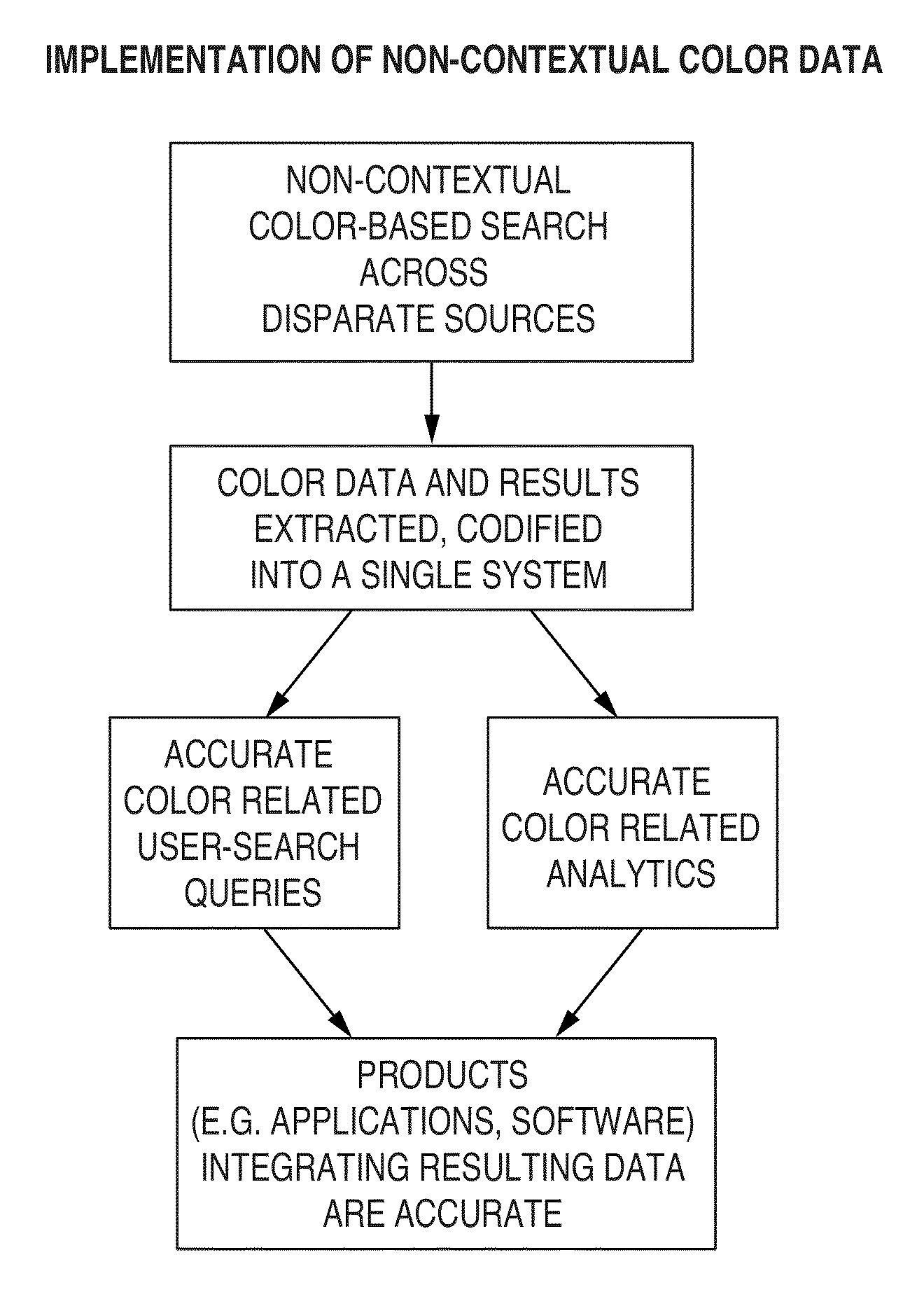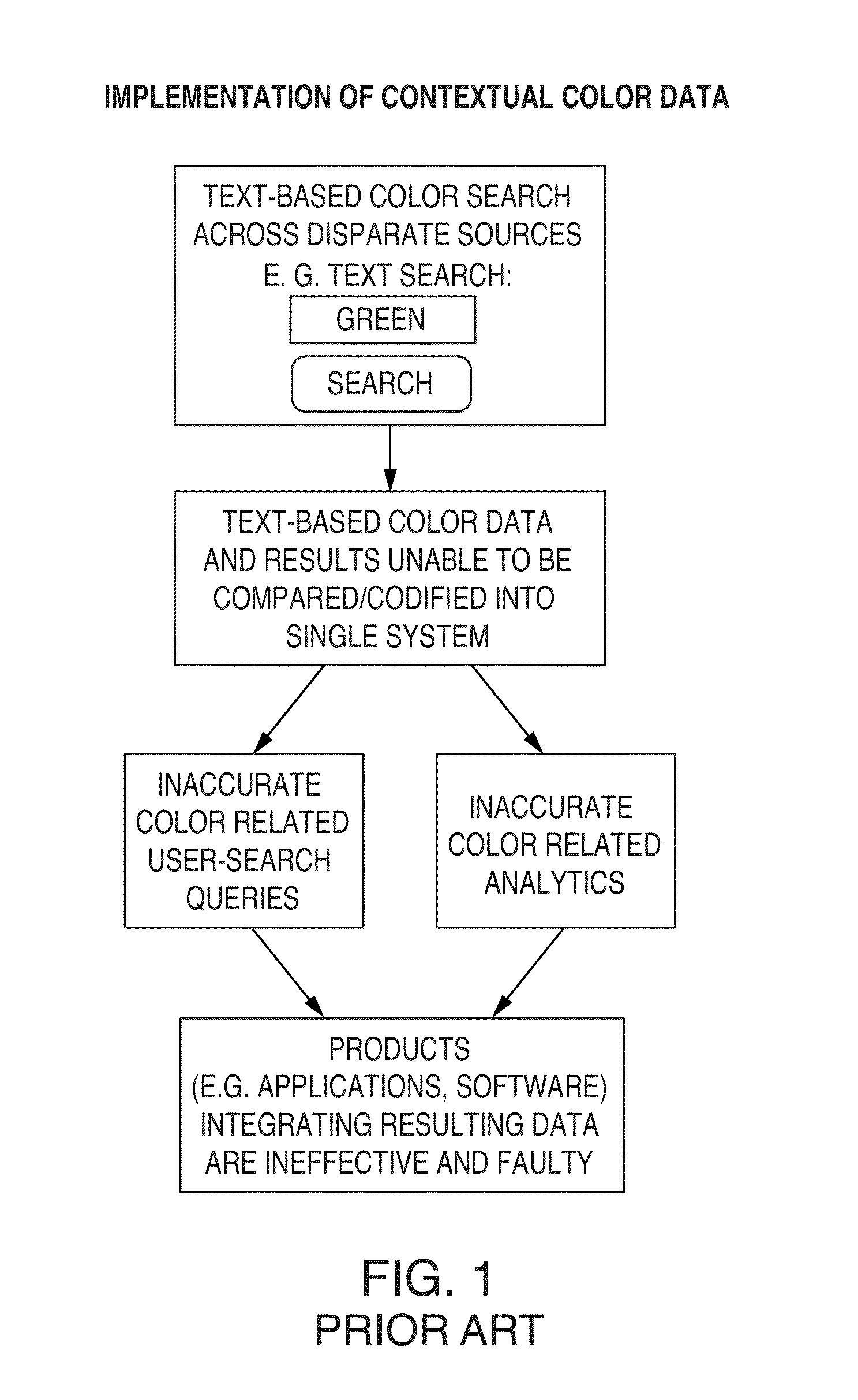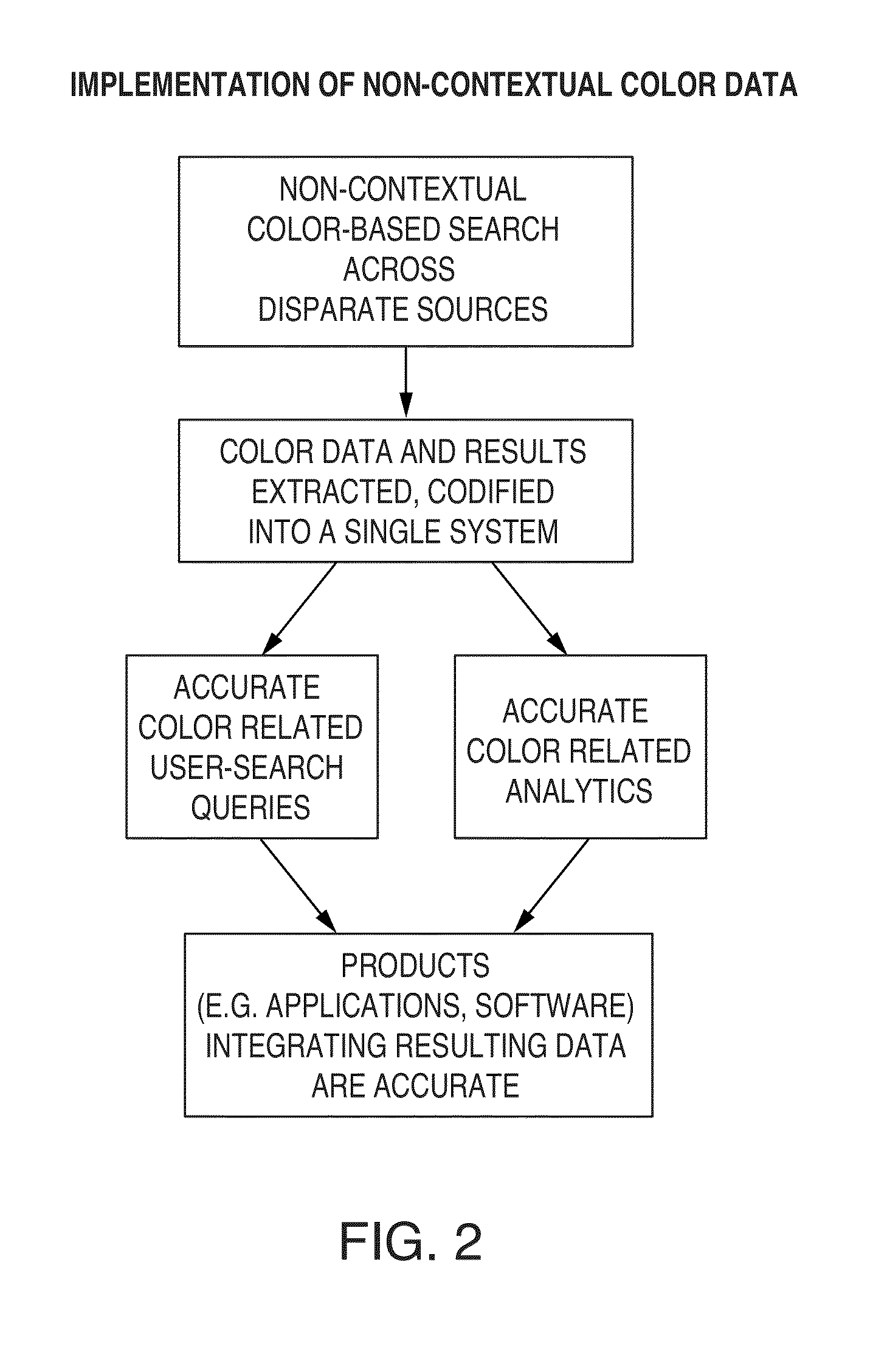Digital Marketing Platform With Formatted Advertising Feature Coupled To Normalized Inventory Management System and Supply Chain Management System Feeds
a digital marketing platform and feature technology, applied in the direction of static indicating devices, instruments, image enhancement, etc., can solve the problems of inability to search for a particular color pattern using color parameters, return a host of irrelevant results, and it is difficult to find products of a particular shade using color parameters, so as to achieve useful and accurate results, effective collection and organization
- Summary
- Abstract
- Description
- Claims
- Application Information
AI Technical Summary
Benefits of technology
Problems solved by technology
Method used
Image
Examples
Embodiment Construction
[0039]The present invention is a marketing platform enhancement to create and transmit targeted advertising, the content of which is clearer, more organized, focused, relevant and current than existing forms of digital and traditional advertising. Advertisements are generated by or on behalf of merchants and distributed to users based upon their historical activities and / or demographics, utilizing or in combination with current information maintained by merchant SCM and / or IMS system(s). Generated advertisements are distributed to users via known email addresses gathered from users or from third parties on behalf of users, via subscription services, or via other available contact means (e.g., directly to handheld device or via data provider of handheld device). The advertising tools disclosed herein take advantage of and build upon the infrastructure implemented in connection with the core system, methods and interfaces that gather, identify, search for and match products based on c...
PUM
 Login to View More
Login to View More Abstract
Description
Claims
Application Information
 Login to View More
Login to View More - R&D
- Intellectual Property
- Life Sciences
- Materials
- Tech Scout
- Unparalleled Data Quality
- Higher Quality Content
- 60% Fewer Hallucinations
Browse by: Latest US Patents, China's latest patents, Technical Efficacy Thesaurus, Application Domain, Technology Topic, Popular Technical Reports.
© 2025 PatSnap. All rights reserved.Legal|Privacy policy|Modern Slavery Act Transparency Statement|Sitemap|About US| Contact US: help@patsnap.com



